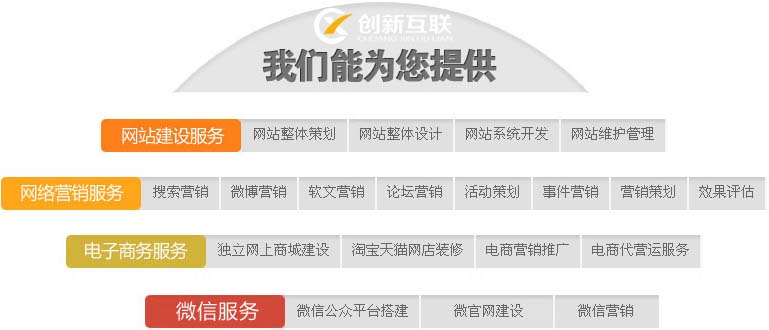Spring框架之基于注解的容器配置
默认情况下,Spring容器中的注解配置没有被打开。因此,在我们使用基于注解的配置之前,我们需要在Spring配置文件中启用它。因此,如果你想在你的Spring应用程序中使用任何注解,请考虑以下配置文件。

@Required注解是方法级注解,适用于Bean的setter方法。这个注解简单地表明setter方法必须在配置时被配置为具有依赖注入的值。
@Component
@Component
public class SimpleMovieLister {
private MovieFinder movieFinder;
@Required
public void setMovieFinder(MovieFinder movieFinder) {
this.movieFinder = movieFinder;
}
// ...
}
属性movieFinder必须存在,若注入时为null,会抛NullPointerException异常。
@Autowired
我们可以使用@Autowired来标记Spring将要解析和注入的依赖关系。我们可以在构造函数、Setter或字段注入中使用这个注解。
构造函数注入
class Car {
private Engine engine;
@Autowired
Car(Engine engine) {
this.engine = engine;
}
}
Setter 注入
class Car {
private Engine engine;
@Autowired
void setEngine(Engine engine) {
this.engine = engine;
}
}
字段注入
class Car {
@Autowired
private Engine engine;
}
@Primary
当有多个相同类型的Bean时,使用@Primary来给一个Bean更高的优先权。
为什么需要@Primary?在某些情况下,我们需要注册超过一个相同类型的Bean。在这个例子中,我们有mySQLConnection()和oracleConnection()的Connection类型的bean。
@Configuration
public class Config {
@Bean
public Connection mySQLConnection() {
return new MySQLConnection();
}
@Bean
public Connection oracleConnection() {
return new OracleConnection();
}
}
如果我们运行该应用程序,Spring会抛出NoUniqueBeanDefinitionException。为了访问具有相同类型的Bean,我们通常使用@Qualifier("beanName")注解,和@Autowired一起应用。在我们的案例中,我们在配置阶段配置Bean,所以@Qualifier不能在这里应用。关于@Qualifier会在本章后面讲到。
为了解决这个问题,Spring提供了@Primary注解。下面的例子展示了如何在一个Spring应用程序中使用@Primary注解。
@Primary注解可用于任何直接或间接用@Component注解的类或用@Bean注解的工厂方法。在这个例子中,我们将使用@Primary注解和@Component注解。
package com.demo.spring.primary;
public interface MessageService {
public void sendMsg();
}
package com.demo.spring.primary;
import org.springframework.stereotype.Component;
@Component
public class FacebookMessageService implements MessageService {
@Override
public void sendMsg() {
System.out.println("FacebookMessageService implementation here");
}
}
package com.demo.spring.primary;
import org.springframework.stereotype.Component;
@Component
public class EmailMessageService implements MessageService {
@Override
public void sendMsg() {
System.out.println("EmailMessageService Implementation here");
}
}
package com.demo.spring.primary;
import org.springframework.context.annotation.Primary;
import org.springframework.stereotype.Component;
@Primary
@Component
public class TwitterMessageService implements MessageService {
@Override
public void sendMsg() {
System.out.println("TwitterMessageService Implementation here");
}
}
请注意,在上述TwitterMessageService类中,我们添加了@Primary与@Component注解。
package com.demo.spring.primary;
import org.springframework.context.annotation.ComponentScan;
import org.springframework.context.annotation.Configuration;
@Configuration
@ComponentScan(basePackages = "com.demo.spring.primary")
public class AppConfig {
}
public class Application {
public static void main(String[] args) {
AnnotationConfigApplicationContext context = new AnnotationConfigApplicationContext(AppConfig.class);
MessageService messageService = context.getBean(MessageService.class);
messageService.sendMsg();
context.close();
}
}
Output:
TwitterMessageService Implementation here
@Qualifier
当我们创建了多个相同类型的Bean,但只想将其中一个与某个属性关联。可以使用@Qualifier注解和@Autowired注解来控制。
@Qualifier用于解决模糊的依赖关系,也就是说,它帮助@Autowired注解选择其中一个依赖关系。如果一个接口有多种实现,那么我们可以在运行时使用@Qualifier来选择所需的实现。
public interface MessageService {
public void sendMsg(String message);
}
public class EmailService implements MessageService{
public void sendMsg(String message) {
System.out.println(message);
}
}
public class TwitterService implements MessageService{
public void sendMsg(String message) {
System.out.println(message);
}
}
public class SMSService implements MessageService{
public void sendMsg(String message) {
System.out.println(message);
}
}
public interface MessageProcessor {
public void processMsg(String message);
}
public class MessageProcessorImpl implements MessageProcessor {
private MessageService messageService;
// setter based DI
@Autowired
@Qualifier("TwitterService")
public void setMessageService(MessageService messageService) {
this.messageService = messageService;
}
// constructor based DI
@Autowired
public MessageProcessorImpl(@Qualifier("TwitterService") MessageService messageService) {
this.messageService = messageService;
}
public void processMsg(String message) {
messageService.sendMsg(message);
}
}
@Configuration
@ComponentScan("com.demo.springframework.di")
public class AppConfiguration {
@Bean(name="emailService")
public MessageService emailService(){
return new EmailService();
}
@Bean(name="twitterService")
public MessageService twitterService(){
return new TwitterService();
}
@Bean(name="smsService")
public MessageService smsService(){
return new SMSService();
}
@Bean
public MessageProcessor messageProcessor(){
return new MessageProcessorImpl(twitterService());
}
}
public class TestApplication {
public static void main(String[] args) {
ApplicationContext applicationContext = new AnnotationConfigApplicationContext(AppConfiguration.class);
MessageProcessor userService = applicationContext.getBean(MessageProcessor.class);
userService.processMsg("twitter message sending ");
}
}
Output:
twitter message sending
@Resource
Spring支持通过@Resource(javax.annotation.Resource)方式注入,可以在字段或setter方法上加该注解,@Resource有一个name属性,如果不指定name,默认就是字段或setter方法名称。
public class SimpleMovieLister {
private MovieFinder movieFinder;
@Resource(name="myMovieFinder")
public void setMovieFinder(MovieFinder movieFinder) {
this.movieFinder = movieFinder;
}
}
public class SimpleMovieLister {
private MovieFinder movieFinder;
@Resource
public void setMovieFinder(MovieFinder movieFinder) {
this.movieFinder = movieFinder;
}
}
@Value
该注解可用于向Spring管理的Bean中的字段注入值,它可以应用于字段或构造函数/方法参数级别。
我们需要一个属性文件来定义我们想用@Value注解注入的值。因此,我们首先需要在我们的配置类中定义一个@PropertySource--带有属性文件名。
value.from.file=Value got from the file
priority=high
listOfValues=A,B,C
注意:Spring Boot默认配置了一个PropertySourcesPlaceholderConfigurer的Bean,它将从application.properties和application.yml文件中获取属性。
@Value("${value.from.file}")
private String valueFromFile;有时,我们需要注入一堆值。将它们定义为属性文件中单个属性用逗号分隔的值,或定义为系统属性并注入一个数组。例如listOfValues中定义了逗号分隔的值,所以数组的值将是["A","B", "C"]。
@Value("${listOfValues}")
private String[] valuesArray;
使用SpEL表达式
使用SpEL表达式获取配置文件中priority的值。
@Value("#{systemProperties['priority']}")
private String spelValue;如果在property文件中没有定义属性,就会报nullvalue异常。为了防止这种情况,我们可以在SpEL表达式中提供一个默认值。如果属性没有定义,我们就为该字段设置默认值。
@Value("#{systemProperties['unknown'] ?: 'some default'}")
private String spelSomeDefault;我们也可以用其它bean的属性值:
@Value("#{someBean.someValue}")
private Integer someBeanValue;从属性配置中获取List列表:
@Value("#{'${listOfValues}'.split(',')}")
private List valuesList; 把@Value注入到Map加入propeties文件中有如下key:
valuesMap={key1: '1', key2: '2', key3: '3'}注意,Map中的值必须是单引号。
@Value("#{${valuesMap}}")
private Map valuesMap; 如果要获取map中指定的key:
@Value("#{${valuesMap}.key1}")
private Integer valuesMapKey1;如果不确定Map中是否包含key,我们可以使用一个安全的表达式,使其不会抛出异常,并且设置值为null:
@Value("#{${valuesMap}['unknownKey']}")
private Integer unknownMapKey;为属性设置默认值:
@Value("#{${unknownMap : {key1: '1', key2: '2'}}}")
private Map unknownMap;
@Value("#{${valuesMap}['unknownKey'] ?: 5}")
private Integer unknownMapKeyWithDefaultValue; 注入前过滤不需要的值:
@Value("#{${valuesMap}.?[value>'1']}")
private Map valuesMapFiltered;
与构造函数一起注入
@Component
@PropertySource("classpath:application.properties")
public class PriorityProvider {
private String priority;
@Autowired
public PriorityProvider(@Value("${priority:normal}") String priority) {
this.priority = priority;
}
// standard getter
}
注意:默认配置文件是application.properties或application.yaml则不需要@PropertySource注解。
与Setter一起注入
@Component
@PropertySource("classpath:values.properties")
public class CollectionProvider {
private Listvalues = new ArrayList<>();
@Autowired
public void setValues(@Value("#{'${listOfValues}'.split(',')}") Listvalues) {
this.values.addAll(values);
}
// standard getter
}
@PostConstruct and @PreDestroy
我们可以自定义Bean的创建和销毁附动作。我们可以通过实现InitializingBean和DisposableBean接口来实现它。我们也可以用@PostConstruct和@PreDestroy注解来实现。
@PostConstruct
Spring只调用一次用@PostConstruct注释的方法,就在Bean属性初始化之后。请记住,即使没有任何东西需要初始化,这些方法也会运行。带有@PostConstruct注释的方法不能是静态的。
@Component
public class DbInit {
@Autowired
private UserRepository userRepository;
@PostConstruct
private void postConstruct() {
User admin = new User("admin", "admin password");
User normalUser = new User("user", "user password");
userRepository.save(admin, normalUser);
}
}
@PreDestroy
带有@PreDestroy注解的方法只运行一次,就在Spring将我们的Bean从容器中移除之前。带有@PreDestroy注解的方法不能是静态的。
@Component
public class UserRepository {
private DbConnection dbConnection;
@PreDestroy
public void preDestroy() {
dbConnection.close();
}
}
网站栏目:Spring框架之基于注解的容器配置
文章分享:http://www.csdahua.cn/qtweb/news25/445975.html
网站建设、网络推广公司-快上网,是专注品牌与效果的网站制作,网络营销seo公司;服务项目有等
声明:本网站发布的内容(图片、视频和文字)以用户投稿、用户转载内容为主,如果涉及侵权请尽快告知,我们将会在第一时间删除。文章观点不代表本网站立场,如需处理请联系客服。电话:028-86922220;邮箱:631063699@qq.com。内容未经允许不得转载,或转载时需注明来源: 快上网
- 我们应该怎样使用开源软件
- 四两拨千斤!快速改善UI视觉体验的7个小技巧
- 域名格式错误是怎么回事,怎么弄?急?(域名解析不对-虚拟主机/数据库问题)
- 话说开云用着稳不稳呀?
- 云服务器备案需要什么
- 使用Redis解决高并发问题(使用redis处理高并发)
- Pandas中count()方法如何使用
- 如何查询域名的备案信息?详细教程及注意事项(怎么查域名的备案信息呢)
- Linux下journalctl命令使用实例
- 创新互联小程序教程:微信小程序工具素材管理
- 用Redis进行高效的用户注册(redis用户注册)
- 香港服务器域名需要备案么?香港服务域名怎么写
- 如何获取并分析Linux系统中的鼠标数据?(linux鼠标数据)
- 云服务器带宽要求?(国内的云服务器租用怎么选择带宽)
- 如何零基础建网站,傻瓜式建站?